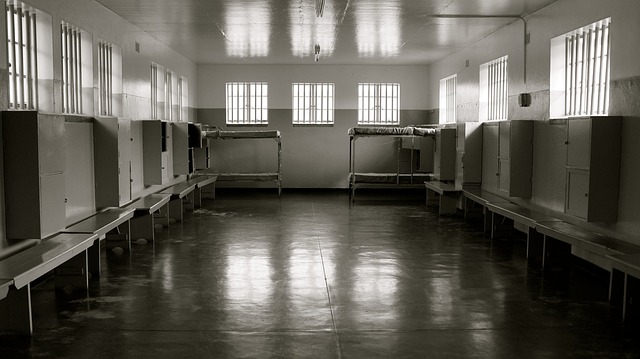Youth DUI, a severe issue with life-threatening consequences, is addressed through targeted Youth DUI Prevention Programs. These programs focus on education, awareness, and skill-building to empower teens against impaired driving. Using evidence-based strategies, peer mentoring, and technology, they deter high-risk behaviors and foster long-term positive changes. Specialized programs offer a second chance to teens involved in drinking and driving incidents, promoting accountability and personal growth. Through interactive workshops and peer support, these initiatives transform lives, reducing repeat offenses and shaping brighter futures.
Teen rehabilitation centers are crucial in addressing the growing concern of Youth DUI (Drunk Driving Under Influence). This article delves into the multifaceted issue of underage drinking and its severe consequences, specifically focusing on understanding the impact and challenges of Youth DUI. We explore effective prevention strategies and highlight successful rehabilitation programs that offer a second chance to young drivers. By examining real-life success stories, we emphasize the transformative power of these programs in saving lives and shaping futures.
- Understanding Youth DUI: The Impact and Challenges
- Effective Strategies for DUI Prevention Among Teens
- Rehabilitation Programs: A Second Chance for Young Drivers
- Success Stories: How Youth DUI Prevention Programs Turn Lives Around
Understanding Youth DUI: The Impact and Challenges

Youth DUI, or Driving Under the Influence, is a significant concern for parents and authorities alike. It involves individuals under the legal drinking age operating vehicles while impaired by alcohol or drugs. The impact of Youth DUI can be devastating, leading to severe accidents, injuries, and even fatalities. Not only does it pose an immediate danger to the driver and others on the road, but it also carries long-lasting consequences for young lives, often derailing their future prospects.
The challenges in addressing Youth DUI are multifaceted. First, it requires a comprehensive understanding of adolescent behavior and decision-making processes. Many prevention programs focus on education, raising awareness about the risks associated with drinking and driving. These initiatives aim to foster responsible choices by equipping teens with the knowledge to recognize potential dangers. Additionally, early intervention and support systems play a crucial role in Youth DUI Prevention Programs, helping at-risk youth steer clear of such high-risk behaviors.
Effective Strategies for DUI Prevention Among Teens

Teenagers facing charges related to driving under the influence (DUI) require structured interventions that go beyond punishment. Effective youth DUI prevention programs focus on education, awareness, and skill-building to empower young individuals with the knowledge and tools needed to make responsible decisions. These initiatives often involve peer mentoring, where recovered peers share their stories, serving as powerful role models for at-risk teens. By fostering open conversations about alcohol consumption, its effects, and alternative solutions, these programs aim to create a culture of responsibility and mutual support.
Incorporating evidence-based strategies is key to the success of Youth DUI Prevention Programs. This includes regular workshops on decision-making skills, impulse control training, and risk assessment exercises. Additionally, leveraging technology through mobile apps or online platforms can facilitate continuous engagement, offering tips for resisting peer pressure, promoting sobriety, and providing access to support networks. These comprehensive approaches not only deter teens from engaging in DUI but also promote long-term positive behavioral changes.
Rehabilitation Programs: A Second Chance for Young Drivers

Teenagers involved in drinking and driving incidents often find themselves at a crucial crossroads, facing potential long-term consequences. However, hope remains through specialized Rehabilitation Programs designed specifically for young drivers. These programs offer a second chance, focusing on Youth DUI Prevention to guide teens back onto the right path.
Rehabilitation goes beyond punishment; it’s about education, counseling, and skill-building. Participants engage in therapeutic activities, learn about the impact of their actions, and acquire strategies to make healthier choices. By addressing underlying issues and providing a supportive environment, these programs aim to prevent future DUI incidents, fostering a sense of accountability and personal growth among young participants.
Success Stories: How Youth DUI Prevention Programs Turn Lives Around

In the realm of teen rehabilitation, Youth DUI Prevention Programs have emerged as powerful tools to steer young lives back on track. These programs, designed to educate and empower adolescents about the dangers of drunk driving, often serve as a catalyst for positive change. Through interactive workshops, real-life stories, and peer support, at-risk youth are given the chance to reflect on their choices and make better decisions in the future.
Success stories from these programs paint a hopeful picture. Many participants, once faced with potential DUI charges or risky behaviors, have reported significant shifts in their perspectives. They become advocates for change within their circles, sharing their experiences to raise awareness among peers. This ripple effect not only reduces repeat offenses but also fosters a culture of responsible decision-making among teens, ultimately saving lives and shaping brighter futures.
Teen rehabilitation programs offer a promising path forward, providing crucial second chances for young drivers who have made poor choices behind the wheel. By implementing effective strategies and tailored interventions discussed in this article—from comprehensive education to supportive counseling—we can significantly reduce recidivism rates and ensure that youth DUI prevention programs become the cornerstone of a safer future for our roads. Through success stories shared, it becomes evident that with the right support, teens can overcome challenges and thrive, serving as a testament to the transformative power of these initiatives.






